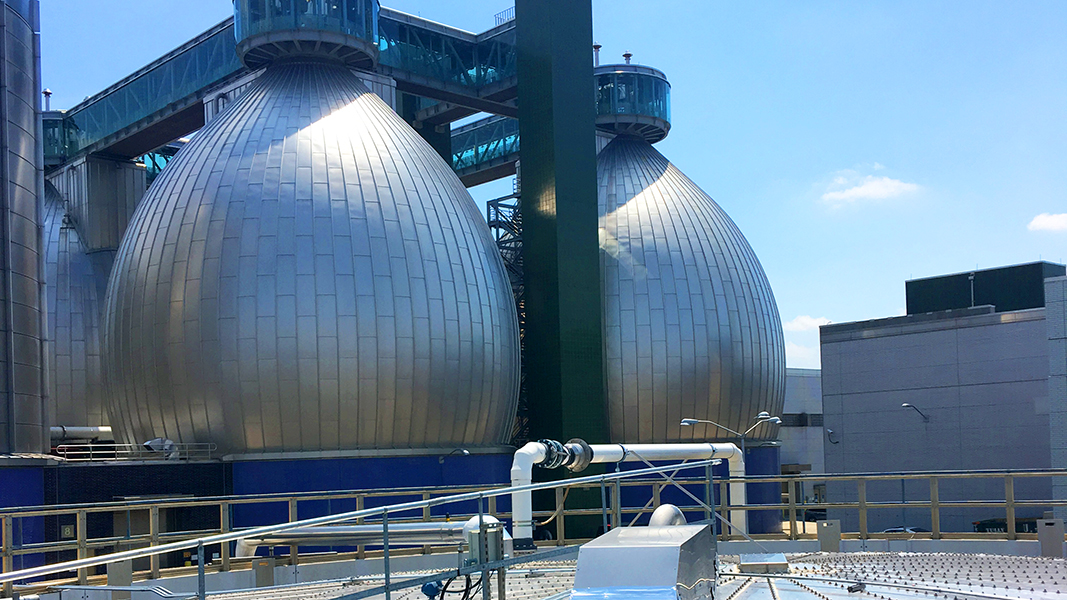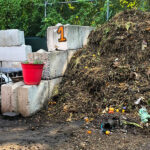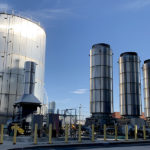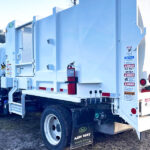Top: Newtown Creek (Brooklyn, New York) wastewater treatment plant anaerobic digesters.
Energy Vision, a nonprofit focused on viable technologies and strategies for a sustainable, low-carbon energy and transportation future, released its most recent joint assessment of the U.S. renewable natural gas (RNG) industry, performed on behalf of the U.S. Department of Energy’s Argonne National Laboratory. The assessment, which consists of a database of current and projected RNG projects, shows the total number of RNG production facilities in the U.S. that are operational, under construction or planned increased by 42% — from 219 in early 2019 to 312 by the end of 2020. That includes 157 RNG production facilities now operating (up 78% from 2019); 76 projects under construction (up 100%); and 79 projects in planning.
The 157 operational projects represent total RNG production capacity of over 59 million MMBtu (a 30% increase since 2019), the equivalent of over 459 million gallons of diesel — enough to fuel 50,000 refuse trucks (nearly 40% of the refuse trucks in the U.S.). With 155 new RNG projects under construction or being planned, rapid capacity growth should continue in the years ahead, notes Energy Vision.
Renewable natural gas (RNG), also known as biomethane, is made by capturing and refining biogas (mostly methane) that organic wastes such as food waste, farm manure and municipal wastewater emit as they decompose. According to Argonne National Laboratory’s GREET model, RNG produced from anaerobic digestion of food waste or dairy and hog manure is net carbon-negative over its lifecycle, including production, transport and use. “More GHGs are captured in producing the fuel than are ever emitted by the vehicles burning it,” explains Matt Tomich, Energy Vision’s president. “This means that making and using RNG can result in lower atmospheric GHGs than if it were never made or used in the first place.” Recent studies estimate that existing domestic sources could produce enough RNG to displace 10% of current U.S. fossil natural gas production, or displace close to 25% of diesel fuel in transportation. “This new assessment shows RNG ramping up quickly, and growth is likely to keep accelerating,” adds Tomich.
Marianne Mintz, who managed the project for Argonne National Laboratory, notes that “RNG can decarbonize a significant share of the energy consumed by heavy-duty vehicles as well as by other users of geologic natural gas today, with little or no change required to existing infrastructure. This realization is fueling growth in the number and average capacity of projects producing RNG, in the range of markets into which it is being introduced, and in overall demand for the fuel.”













